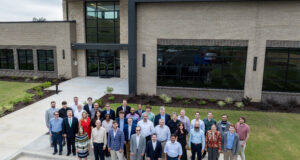German Companies Team to Offer Laser-Based C-UAS Solution
German companies Rohde & Schwarz (Munich) and TRUMPF (Ditzingen) have formed a partnership to develop a laser-based counter-unmanned aerial system (C-UAS) solution. The as-yet-unnamed C-UAS system will integrate communications electronic support measures (CESM) sensors from Rohde & Schwarz with a compact radar and a laser countermeasures system from TRUMPF.
Rohde & Schwarz has more than a decade of experience in the C-UAS market. In 2015, it introduced its first counter-drone solution, known as GUARDION, which was developed in collaboration with Diehl Defence (providing its SkyWold HPEM effector) and ESG (providing the C2 system). In 2017 Rohde & Schwarz introduced the first version of its ARDRONIS counter-drone family, which now includes variants such as ARDRONIS Detect, providing multi-band RF detection and direction finding, and ARDRONIS Effect, which adds a multi-band jammer. This week’s announcement will see laser-based countermeasures added to the ARDRONIS suite of effectors.
TRIUMPF is new to the counter-UAS market. However, the company has a long history in developing high-power laser technology for manufacturing (laser machining and welding) and scientific applications.
In a joint press announcement, the companies stated, “Rohde & Schwarz will integrate TRUMPF’s high-energy laser system into a comprehensive drone defense ecosystem, providing the ability to effectively detect, track, and neutralize unauthorized drones.”
With the growing use of fiber-optic first-person view (FPV) attack drones, especially in the Russia-Ukraine War, drone operators are becoming extremely dependent on the drone’s EO/IR sensor to navigate, find targets and especially to control the drone during the terminal guidance phase. This trend is driving requirements for C-UAS solutions that use radars to detect and track these drones and employ lasers that can jam or damage the EO/IR sensor or damage the drone’s power unit and flight surfaces. – J. Knowles






